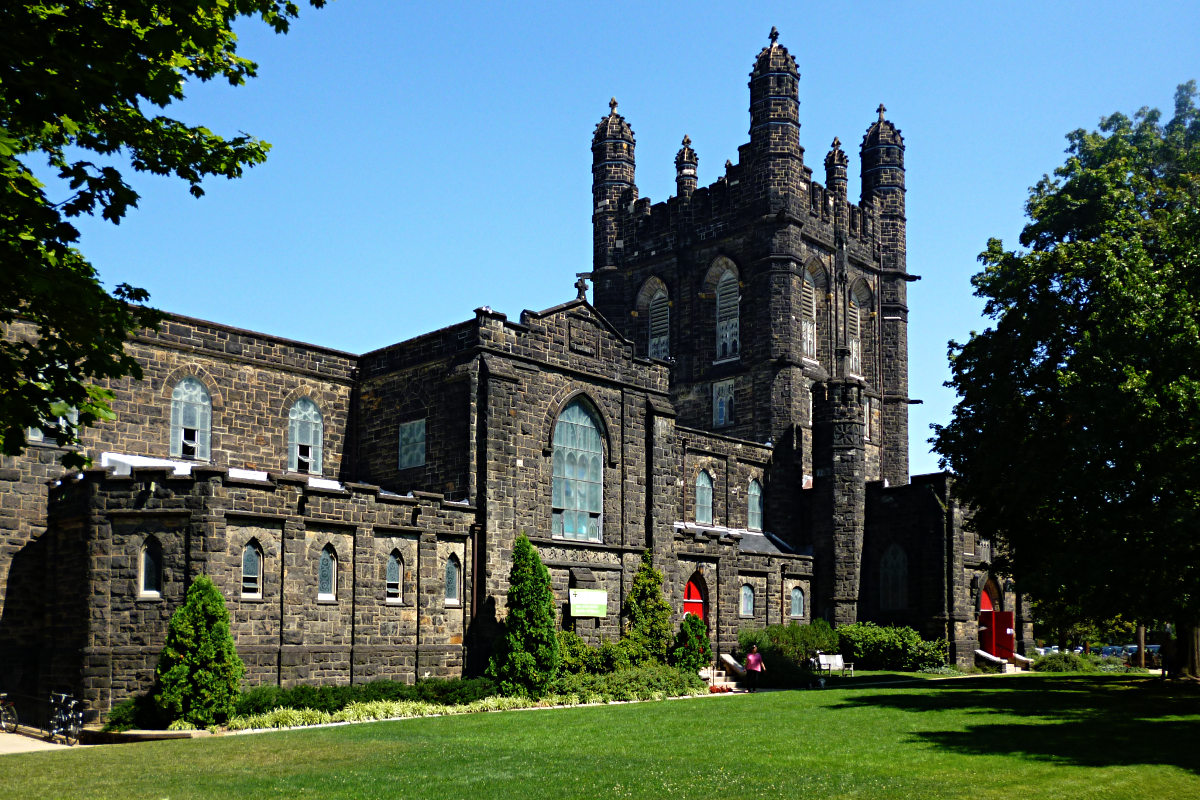These pictures are donated to the public by Father Pitt, who also published pictures of this church back in 2013. In that article he wrote, “Right on the border between Oakland and Shadyside, the Church of the Ascension is one of the diminishing number of black stone buildings in Pittsburgh. Father Pitt hopes that his pictures will preserve the memory of our black stones when the last stone building has been sandblasted.” As he expected, those black stones did not remain black much longer. Here is how the church looked in 2013:

There was a time when all stone buildings in Pittsburgh looked like this. It was the architectural signature of the city. Since the soot stopped accumulating, however, more and more of the black stone buildings of Pittsburgh have been cleaned to reveal their original color. One wonders whether the architects ever really intended them to be seen that way. They knew what Pittsburgh’s atmosphere was like: did they expect their buildings to end up anything but black?
As Dr. Boli predicted, the guesses were entertaining, and in many ways more plausible than the truth. Truth often lacks plausibility, and something should be done about that.
“Mary,” for example, suggested that it might be a “neighborhood water tower with defense capabilities to keep the adjacent city council at bay.” In the jealously jurisdictional world of southwestern Pennsylvania, that is a very plausible idea. Every year the local papers run an op-ed piece about the many potential benefits of merging Pittsburgh and Allegheny County, the way Philadelphia merged with Philadelphia County long ago. It would create one of the ten largest cities in the country. It would consolidate many duplicated services and save millions. It will never happen, and if it were seriously threatened, every borough would build towers like the one Mary envisioned.
“GP” suggested that it was a “synchronization point” in a video game, which is also very plausible. It is certainly more plausible than the implausible fact that Pittsburgh is crusty with these Gothic churches, none of which could possibly be built today, since the money would never be spent and the crafts that produced their ornaments have all died.
“James the Lesser” was correct that “this is in a land that cares about conservation of history”: the church has been on the Pittsburgh History and Landmarks Foundation’s landmark list for more than fifty years, and Shadyside is the kind of neighborhood where there is good money for preservation. But the “oddly boxy statues” turn out to be an optical illusion that will be dispelled if you enlarge the picture.



